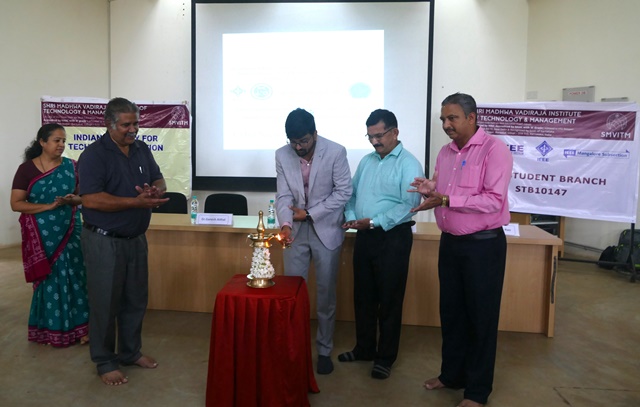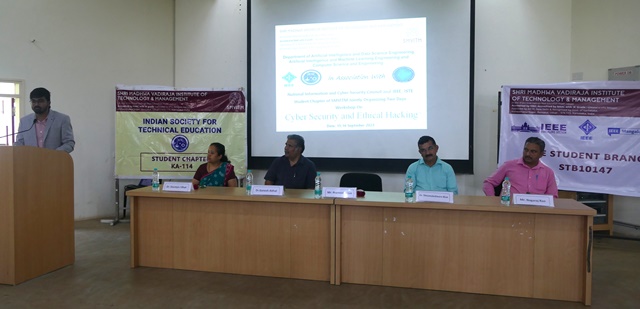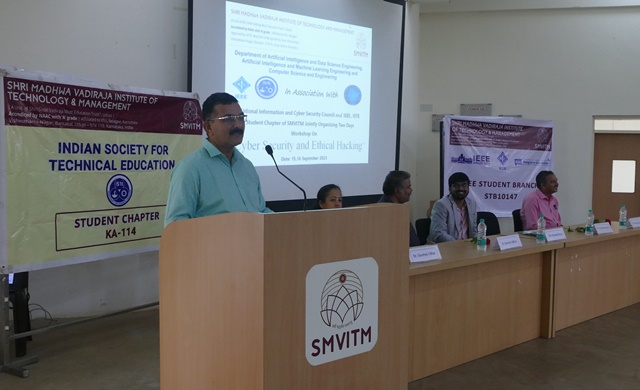Udupi: Workshop on ‘Cyber Security & Ethical Hacking’ held at SMVITM
Media Release
Udupi, Sep 19: The Department of Artificial Intelligence & Data Science, Artificial Intelligence & Machine Learning Engineering, Department of Computer Science Engineering, ISTE & IEEE student chapters of SMVITM, in association with the National Information and Cyber Security Council (NICC) organized a two days workshop on “Cyber Security and Ethical Hacking” on September 15 and 16 in the institute premises.
Prameel Arjun, CEO, Prikus Group & Head, Research and Operations, National Information and Cyber Security Council (NICC) was the chief guest. He inaugurated the programme by lighting the lamp. In his Inaugural address to the gathering, he urged that the students must be equipped with the knowledge and skills necessary to understand and protect against cyber threats, and to explore the ethical dimension of hacking. Also he said that practical skills were needed to secure digital assets and protect against cyber threats effectively.



Dr Thirumaleshwara Bhat, principal, in his presidential address, expressed his gratitude to the team from National Information and Cyber Security Council (NICC) for imparting such workshop for the benefit of students and urged the participants to gain maximum benefits.
Earlier, Nagaraja Rao, in-charge head, Department. of AI & DS and AI & ML Engineering welcomed the gathering and gave insights about the wokshop, importance of conducting such workshops for the benefit of the students.
Hithashree, 2nd year Data Science, invoked the blessings from the Almighty. Chandana of final year CSE, compered the programme. Dr Sowmya J Bhat, head, Department of CSE proposed a vote of thanks.
A total of 240 students participated in the workshop.

